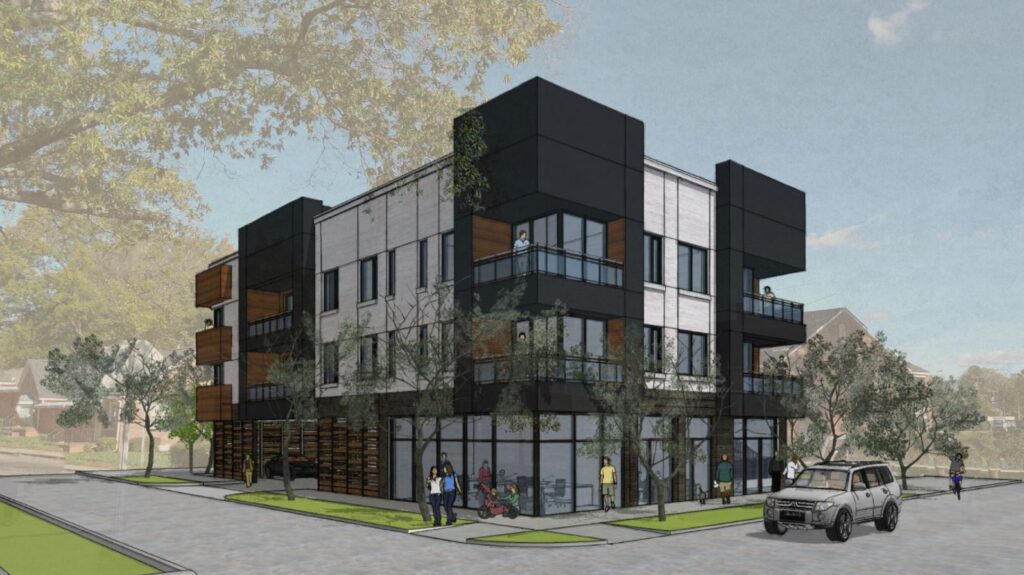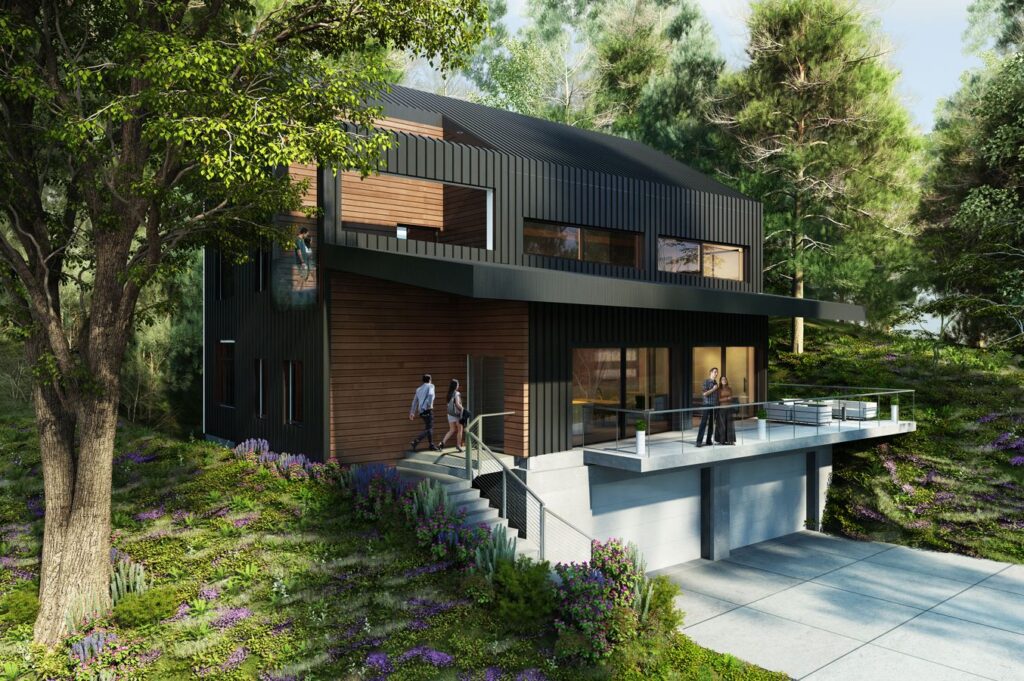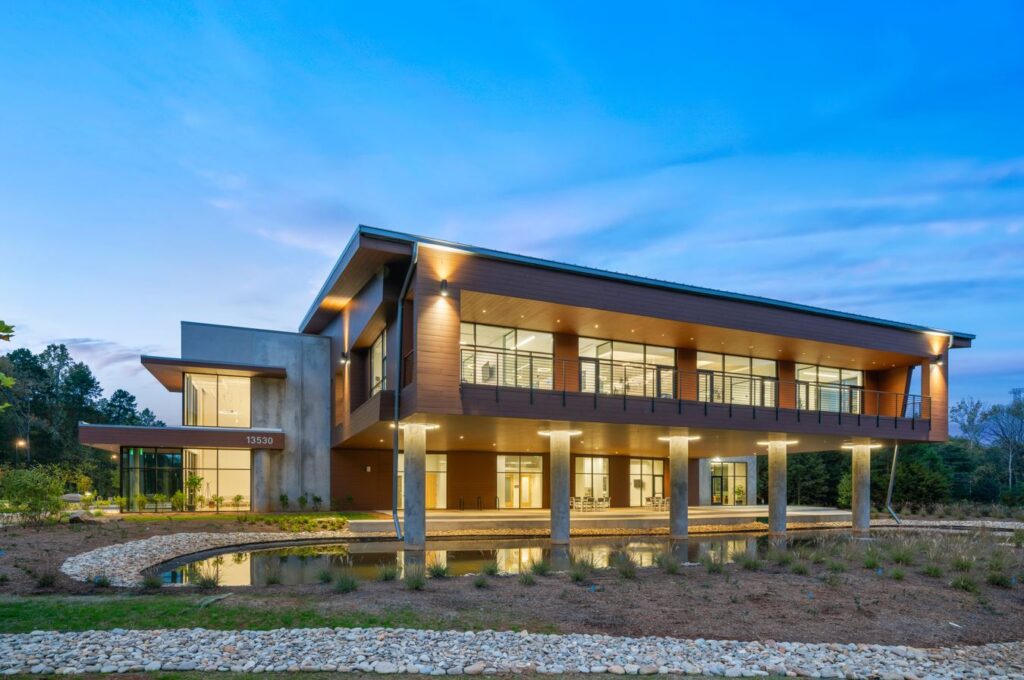Passive House 101
This is a guest post by our Gold Partner, Insight Architects.
Passive House is an internationally operated performance-based energy certification program with a goal of minimal energy consumption. It is used for all buildings, from single family homes to high rises.

Design for passive house microunits
The first passive house was built in 1991 in Darmstadt, Germany. More than 40,000 buildings have been constructed in the ensuing years, as Passive House has become the most tested and most rigorously verified performance-based building standard. Passive House uses on average 90% less energy than conventional construction. With such big energy savings, it is much easier to get to a net-zero, net-zero ready or net positive building.

Design for a Passive House near Asheville, NC
Passive house is based on five simple design principles:
1. Continuous Thermal Insulation: Passive House designs building with adequate thermal insulation based on climate. The buildings have an uninterrupted continuous thermal layer. Think of it as a lunch box, insulation all around.
2. High performance windows & doors: The weakest link in a building are the openings, windows, and doors. An underground bunker would perform extremely well in terms of energy efficiency, not many users find this to be an acceptable environment for humans to live in. Passive House designs with high performance windows and doors that are strategically placed and optimized for solar heat gain.
3. Airtightness: Passive House buildings have a continuous uninterrupted air barrier to keep the energy within the building envelope preventing energy loss and saving energy. It also helps with moisture control.
4. Comfort ventilation with heat or energy recovery: In combination with an air-tight envelope continuous ventilation with heat recovery or energy recovery are used. This creates high indoor air quality environments that are free of outdoor pollutants and constantly cleared of indoor pollutants.
5. Thermal-bridge free design: Any time the insulation does not protect the structural elements the outdoor temperature can transfer through the structural element into the indoor environment. This becomes a weak link and energy gets lost. Passive House details buildings in such a way to avoid thermal bridging and keep a continuous thermal area.

Pester USA, Huntersville NC: Office and light manufacturing
Commonly asked questions about Passive House
1. What are the benefits of having a passive house-certified home or commercial building?
Besides the energy efficiency and indoor air quality, Passive House buildings are uniquely connected to nature. The building is carefully placed to give the building the most advantage in its relationship to other existing buildings, trees, wind and sun patterns. These buildings are uniquely connected to nature and try to disturb the natural flow minimally. The design process involves keeping existing trees and using them for shading, bringing site work to the minimum and emphasis on daylighting and views.
2. Is a Passive House building more expensive? Passive homes don’t have to be more expensive than a regularly built house. There is more investment in the building envelope, but the mechanical systems, although more sophisticated are smaller. The cost of the building depends more on the size and style, than the fact that it is a Passive House certified structure.
3. Can an existing building be retrofitted into a Passive House? Absolutely yes! Those are the best kind. It makes a lot of sense to do it the right way and make it as energy efficient as possible. This will ensure the longevity of the renovation and secure the existing structure from moisture intrusion and thermal fluctuations.
As the first Certified Passive House Consultant in Charlotte, North Carolina, Insight Architects are excited to discuss your next Passive House project with you! Please contact Kristina Held kheld@insightarch.com or call (704) 344-0445 to schedule an in person or virtual meeting to discuss your project.

Thanks for reading!
As a nonprofit, community support is essential for us to keep doing what we do — including providing free articles like this. If you found this article helpful, please consider supporting Sustain Charlotte.
Want to stay in the loop? Subscribe to our weekly newsletter and follow us on Instagram, Facebook, and Twitter.
